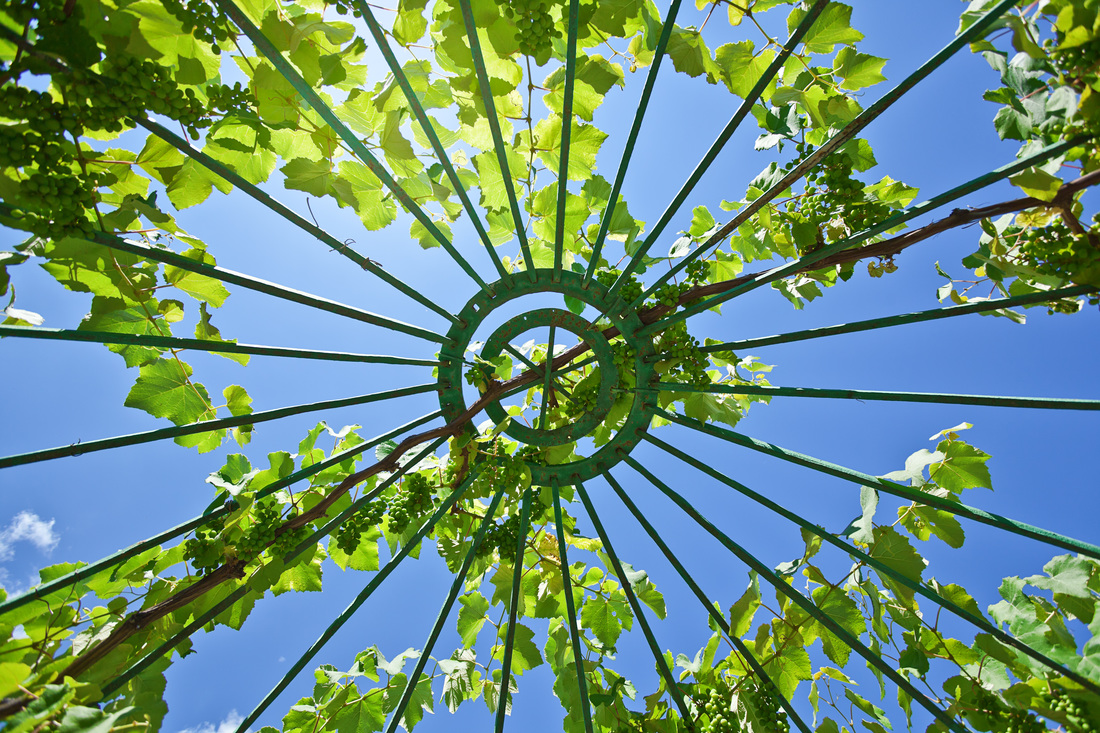There is obviously much, much more to design than just merely juxtaposing these two media and deciding whether they complement or hinder one-another's existence in the garden. No, it involves projecting what each plant will some day become - How tall will it get? How wide will it get? What will its leaves look like in the Fall and in the Summer, if it has any at all ... and what quality of shade will that leaf-pattern produce? Does the plant have the ability to play some other role in the landscape other than a living, growing object taking up space? What purpose does it serve? It also requires the process of deduction, to sift through various data to estimate the probability of a plant's chance for survival in that hypothetical time, space, climate and culture. It requires cross-referencing knowledge of a site's existing physical & cultural conditions (soil composition, soil pH, rainfall, exposure, heat / cold cycles, ground slope, etc) with the actual requirements or "desires" of the plant in question. Will this plant survive the 112-degree heat if I plant it on the south side of the house in a clay-based soil that is constantly wet from condensation from the air conditioner? These are all questions we ask, as a kind of "second-nature" to our daily work. It is these types of questions that drive us to using or not-using a particular species in a particular location.
In this post, I'd like to bring to light a couple ways that plants are used to achieve various purposes within the landscape. This is but a brief list, but I think it will begin to show those who are NOT familiar with design, just how fun it can be!
PASSIVE-FUNCTIONAL ROLES
Many plants serve 'passive'-functional roles within our landscapes. Some plants are utilized as screens to create privacy or enclose a space to create outdoor rooms. We utilize the thorns, prickles, stickers, and spines of others to create barriers along areas that we want to segregate from human trespass. We utilize native trees to create dappled-shade and wildlife areas for birds within our yards and gardens, and non-native higher-water demanding species, such as the Ash or Elm, to create places of shadowed respite outside our homes.
ACTIVE-FUNCTIONAL ROLES
Many species we plant for a single purpose and play an active-function within our gardens -- producing fruits, vegetables, and herbs to utilize in our cooking. Our tasty tangelos, refreshing watermelons, zesty peppers, and summer-time pumpkin patch have always played a key-role in our gardens, but often we dismiss "our garden" as being part of our "landscape." They're important players, just not always ones that we have the time or make the time to enjoy!
PASSIVE-AESTHETIC ROLES
Other species play passive roles in our yards, whose functions are aesthetic or strictly sensory. We utilize our 'architectural' plants, such as agaves, succulents, and ornamental grasses to accentuate, spruce-up, and bring attention to otherwise mundane areas of our landscapes. Some plants have a more prostrate form and creep along the ground, allowing us to use them as alternatives to lawn or to cut back on radiated heat from gravel mulches. Larger shrubs are used in anchoring the architecture of our homes to its adjacent landscape, our 'foundation plants.' While smaller shrubs we place with thoughtfulness to bloom size-shape-color, fragrance, textural & color contrast, and bring added value to wildlife.
Whatever the purpose, function, or value of the individual plants we choose, or how we utilize those plants in unique combinations to achieve a design, all have a beauty and uniqueness unto themselves. Often times, this beauty and desire for each plant lays in the 'eye of the beholder.'
To learn more about individual plants and how they might be used in your landscape, visit the Sonoran Shadows Plant Library.

 RSS Feed
RSS Feed